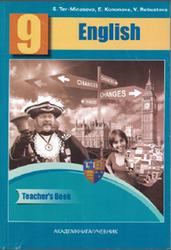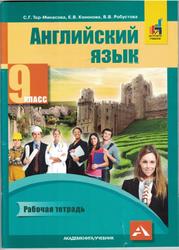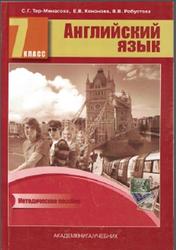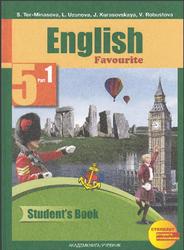Английский язык, 9 класс, Часть 2, Тер-Минасова С., Узунова Л., Кононова Е., Робустова В.
Фрагмент из книги:
The origins of Warwick Castle go back to the Saxon fortress which Ethelfleda, a daughter of Alfred the Great, used for defence against the invading Danes. The first castle to appear on the site of Warwick Castle was a wooden construction built by William the Conqueror in 1068. In the Middle Ages under the Earls of Warwick the castle was rebuilt in stone. Later the military importance of the castle disappeared and it was turned into a residence of a rich style which reflected the wealth and the status of its owners. The castle was home to the Earls of Warwick until 1978. Since then restoration work has been carried out increasingly and most areas of the castle, which were closed to the public, have been opened.
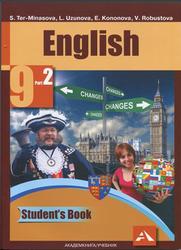
The Yusupov Palace.
The Yusupov Palace is often called the “encyclopedia" of St Petersburg’s aristocratic interior design. The history of the palace dates back to the epoch of Peter the Great, who founded St Petersburg in 1703. It took nearly 200 years for the palace to achieve its present shape. Five generations of Russia’s elite aristocratic dynasty, the Yusupovs, owned the palace between 1830 and 1917. Many of Russia’s and St Petersburg's historical events were
associated with the Yusupov family nest on the Moika. The pre-Yusupov period was a prolonged one and lasted more than a century. In the early 18th century, a small palace was built for Princess Praskovia, Peter the Great’s niece, on the left bank of the Moika River. In 1726, Praskovia gave her house to the Semyonovsky Royal Guard Regiment, which used the palace until 1742. In the mid-1740s, the palace was bought by Count Pyotr Shuvalov. His son Andrei didn’t like the house and a new palace was built in the 1770s. In 1795 the government purchased it from the Shuvalov dynasty, and Empress Catherine gave it as a reward to her maid of honour, Countess Alexandra Branitskaya, who owned the palace for 35 years before selling it to her nephew Boris Yusupov. Seven years of remodelling transformed a modest building into a fantastic, luxurious palace for the Yusupov family. Prince Boris soon brought the priceless collection of paintings, glass and jewellery gathered by his father to the new St Petersburg estate. Prince Nikolai Yusupov, Boris’s son, took over the palace in the mid-1850s. He made an excellent career as a politician. In his free time he composed and played music, displaying a great talent in the musical arts. He spent a lot of money on charity and patronised the arts. The date the palace was sold to the Yusupovs, March 5, 1830, marked the beginning of a new, much more dynamic and glamorous era for the old palace, which went down in the Russian history and St Petersburg’s architectural chronicles under the name “The Yusupov Palace". The beauty and popularity of the palace grew increasingly.
Купить .
Теги: учебник по английскому языку :: английский язык :: Тер-Минасова :: Узунова :: Кононова :: Робустова :: 9 класс
Смотрите также учебники, книги и учебные материалы:
 Английский язык, 3 класс, часть 1, Тер-Минасова С.Г., Узунова Л.М., Сухина Е.И., 2012 — Учебник разработан в соответствии с требованиями федерального государственного образовательного стандарта начального общего образования по иностранному языку. Содержание учебника обеспечивает обучение … Книги по английскому языку
Английский язык, 3 класс, часть 1, Тер-Минасова С.Г., Узунова Л.М., Сухина Е.И., 2012 — Учебник разработан в соответствии с требованиями федерального государственного образовательного стандарта начального общего образования по иностранному языку. Содержание учебника обеспечивает обучение … Книги по английскому языку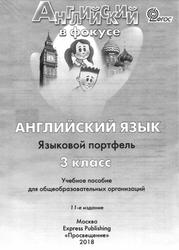 Английский язык, Языковой портфель, 3 класс, учебное пособие для общеобразовательных организаций, Быкова Н.И., Дули Д., Поспелова М.Д., Эванс В., 2018 — Языковой портфель является неотъемлемым компонентом УМК серии Английский в фокусе ( Spotlight ) для учащихся 3 класса общеобразовательных организаций. Языковой … Книги по английскому языку
Английский язык, Языковой портфель, 3 класс, учебное пособие для общеобразовательных организаций, Быкова Н.И., Дули Д., Поспелова М.Д., Эванс В., 2018 — Языковой портфель является неотъемлемым компонентом УМК серии Английский в фокусе ( Spotlight ) для учащихся 3 класса общеобразовательных организаций. Языковой … Книги по английскому языку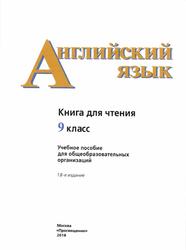 Английский язык, Книга для чтения, 9 класс, учебное пособие для общеобразовательных организаций, Кузовлев В.П., Перегудова Э.Ш., Лапа Н.М., 2018 — Книга для чтения является составной частью учебно-методического комплекта Английский язык для учащихся 9 класса общеобразовательных организаций. В ней представлены материалы … Книги по английскому языку
Английский язык, Книга для чтения, 9 класс, учебное пособие для общеобразовательных организаций, Кузовлев В.П., Перегудова Э.Ш., Лапа Н.М., 2018 — Книга для чтения является составной частью учебно-методического комплекта Английский язык для учащихся 9 класса общеобразовательных организаций. В ней представлены материалы … Книги по английскому языку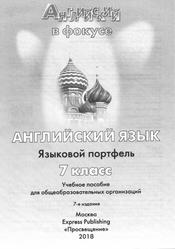 Английский язык, Языковой портфель, 7 класс, учебное пособие для общеобразовательных организаций, Ваулина Ю.Е., Дули Д., Подоляко О.Е., Эванс В., 2018 — Языковой портфель является неотъемлемым компонентом УМК серии Английский в фокусе ( Spotlight ) для учащихся 7 класса общеобразовательных организаций. Языковой … Книги по английскому языку
Английский язык, Языковой портфель, 7 класс, учебное пособие для общеобразовательных организаций, Ваулина Ю.Е., Дули Д., Подоляко О.Е., Эванс В., 2018 — Языковой портфель является неотъемлемым компонентом УМК серии Английский в фокусе ( Spotlight ) для учащихся 7 класса общеобразовательных организаций. Языковой … Книги по английскому языку
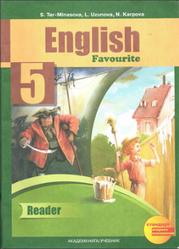 Английский язык, 5 класс, Книга для чтения, Тер-Минасова С.Г., Узунова Л.М., Карпова Н.В., 2013 — Фрагмент из книги: This happened many thousands of years ago when all the animals were wild. The Dog was wild, … Книги по английскому языку
Английский язык, 5 класс, Книга для чтения, Тер-Минасова С.Г., Узунова Л.М., Карпова Н.В., 2013 — Фрагмент из книги: This happened many thousands of years ago when all the animals were wild. The Dog was wild, … Книги по английскому языку Английскому языку, Книга для чтения, 2 класс, Тер-Минасова С.Г., Узунова Л.М., Обукаускайте Д.С., Сухина Е.И., 2010 — Я мамонтёнок Брэм. Мои друзья и я предлагаем тебе прочитать свою первую книжку на английском языке сказки о Винни-Пухе и … Книги по английскому языку
Английскому языку, Книга для чтения, 2 класс, Тер-Минасова С.Г., Узунова Л.М., Обукаускайте Д.С., Сухина Е.И., 2010 — Я мамонтёнок Брэм. Мои друзья и я предлагаем тебе прочитать свою первую книжку на английском языке сказки о Винни-Пухе и … Книги по английскому языку Учебник английского языка, 6 класс, Старков А.П., Диксон Р.Р., 1977 — Фрагмент из книги: 1. The boy in the picture is going to play in the yard. 2. The boy is … Книги по английскому языку
Учебник английского языка, 6 класс, Старков А.П., Диксон Р.Р., 1977 — Фрагмент из книги: 1. The boy in the picture is going to play in the yard. 2. The boy is … Книги по английскому языку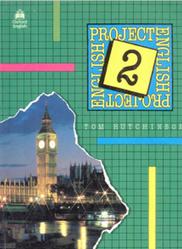 Project english 2, Student’s book, Hutchinson T. — Project english 2, Student s book, Hutchinson T. Project English 2 is the second stage of a three-year beginner’s course … Книги по английскому языку
Project english 2, Student’s book, Hutchinson T. — Project english 2, Student s book, Hutchinson T. Project English 2 is the second stage of a three-year beginner’s course … Книги по английскому языку

